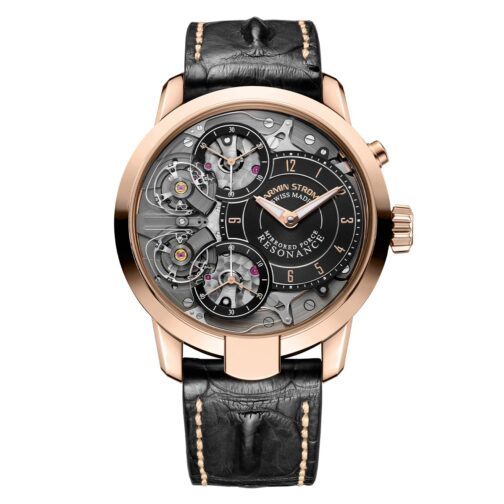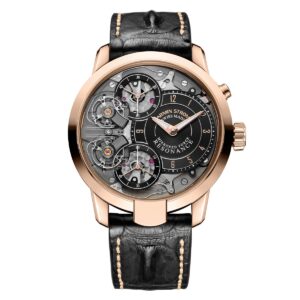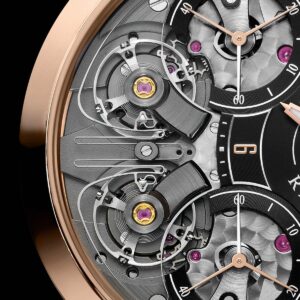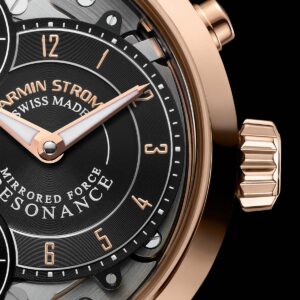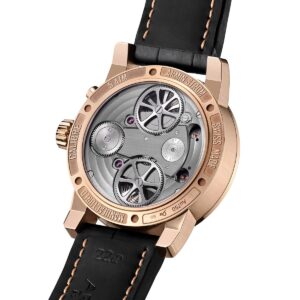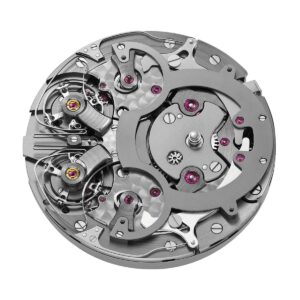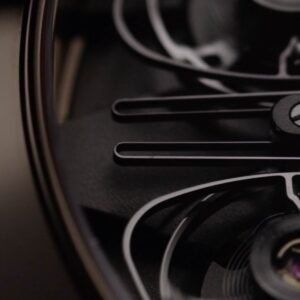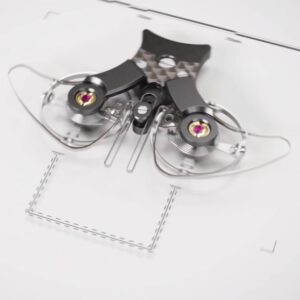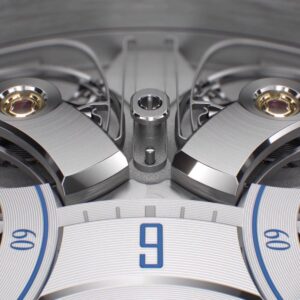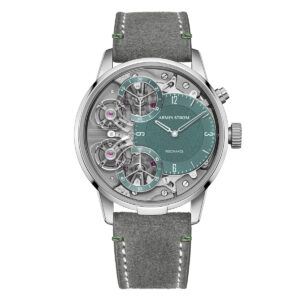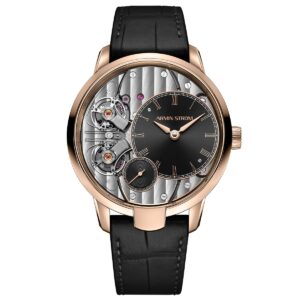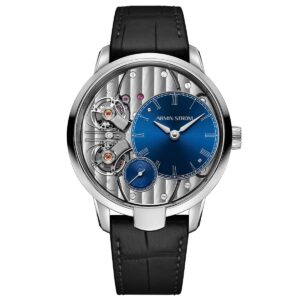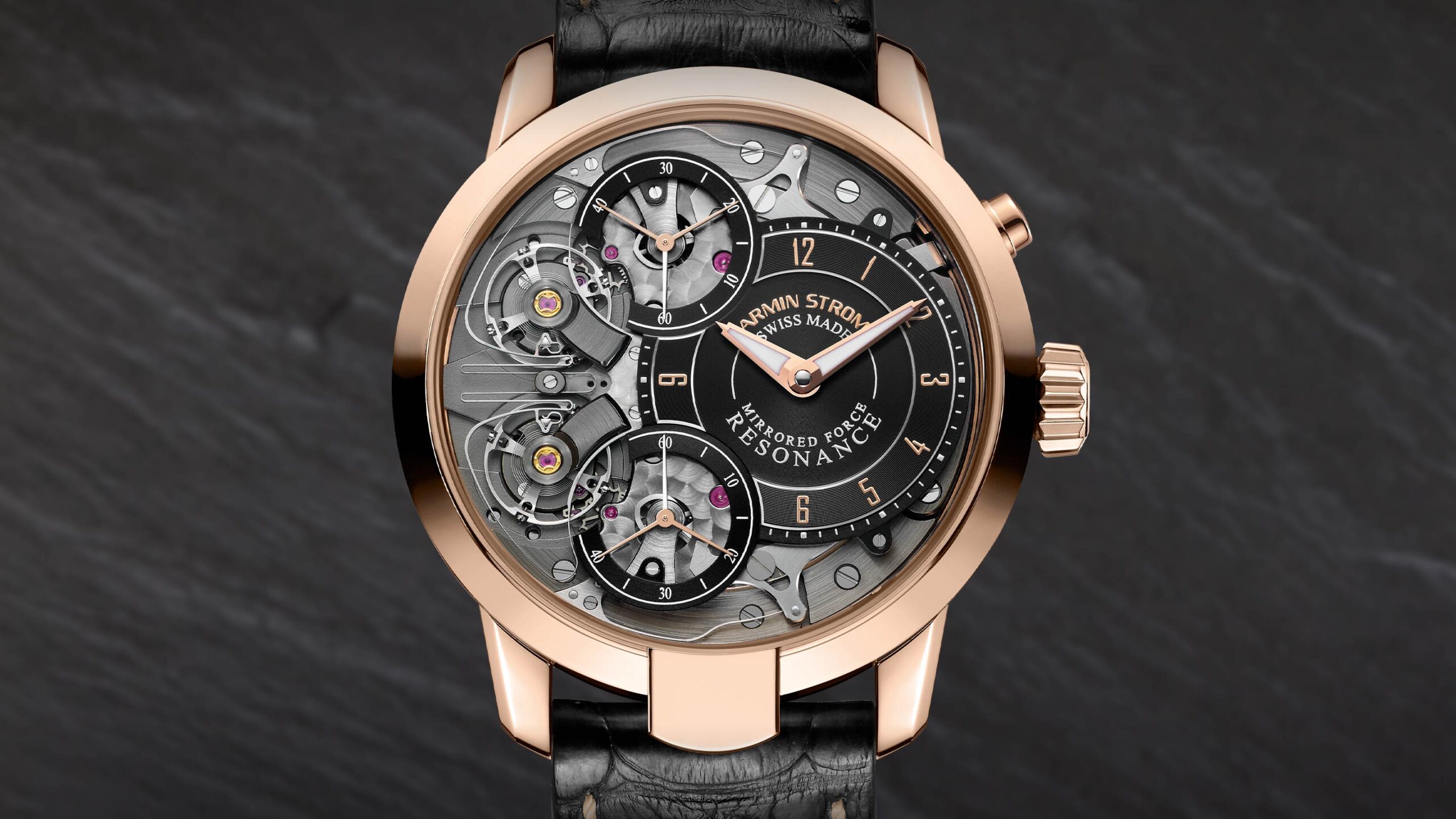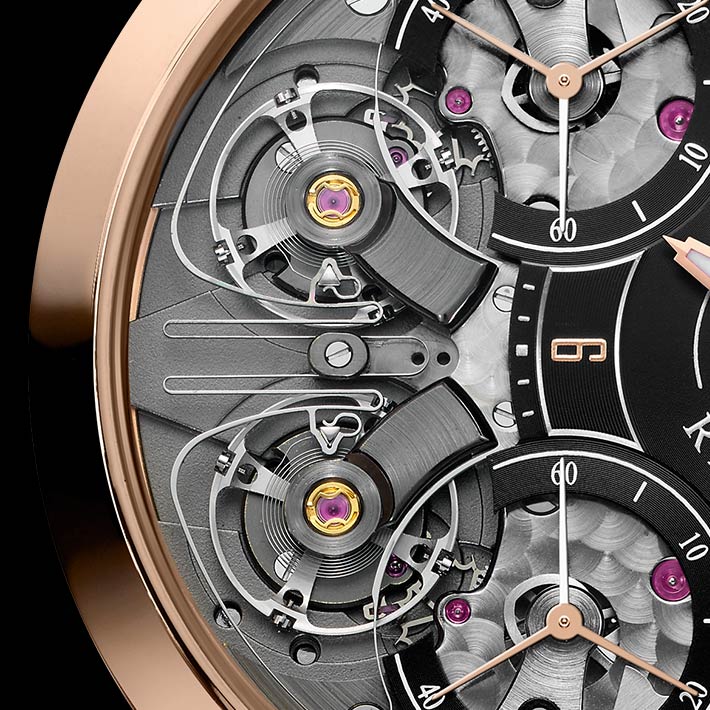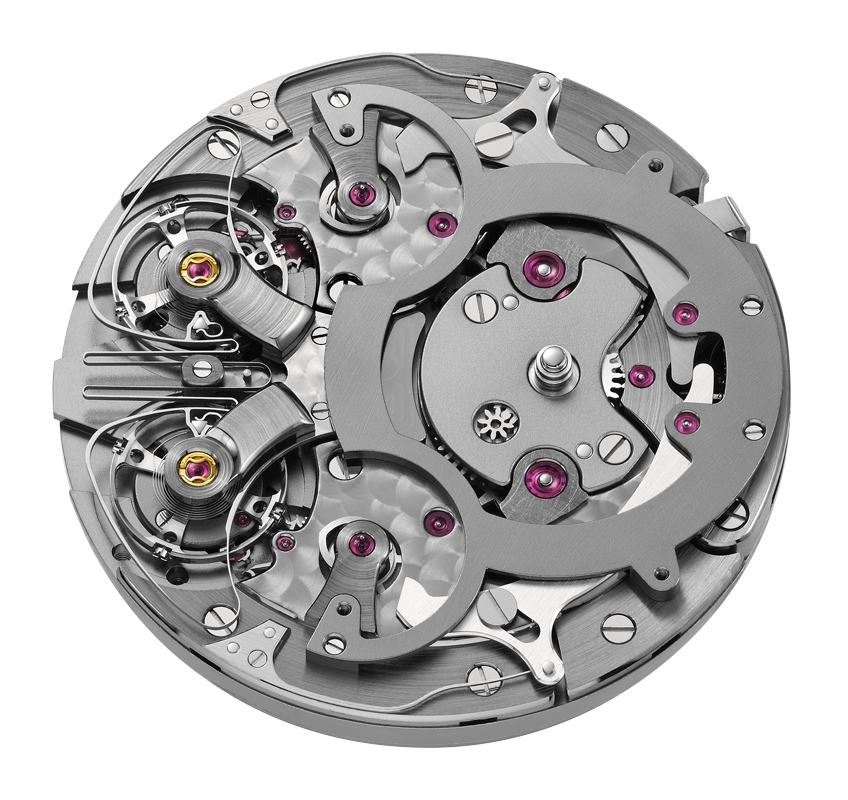Specifications
Distinctions
Two independent, symmetrically mirrored regutors
Case
18ct rose gold
Sapphire crystal and case back with anti-reflective treatment
Diameter: 43.40 mm
Height: 13.00 mm
Lug-to-Lug: 50.95 mm
Water-resistance: 50 m
Dial ring
Black with founded appliques
Hands
Rose gold, manufactured by Armin Strom, decorated by hand
Strap
Delivered with a genuine alligator horn-back strap as well as an additional rubber strap
Width lugs/buckle: 22/20 mm
Buckle
Pin buckle in 18ct rose gold, a folding clasp in 18ct rose gold is available on option
